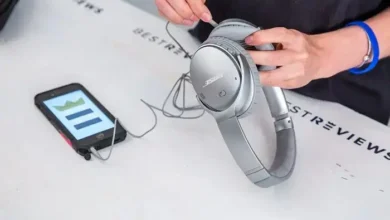Samsung Dishwasher Not Draining? Troubleshooting Tips to Keep Your Dishes Sparkling Clean

Is your Samsung dishwasher not draining properly? A malfunctioning dishwasher can be frustrating, especially when it leaves your dishes dirty and waterlogged. In this comprehensive guide, we’ll address the common issues that can cause drainage problems in Samsung dishwashers. By following these troubleshooting tips, you can ensure your dishwasher functions flawlessly, making your dishwashing experience hassle-free.
When your Samsung dishwasher
fails to drain, it’s important to identify the possible causes. One common issue could be a clogged or blocked drain hose. Over time, food particles, grease, or debris can accumulate, obstructing the flow of water. Check the drain hose for any visible obstructions, and if necessary, detach it for thorough cleaning. This simple step can often resolve drainage problems and restore your dishwasher’s functionality.
Another culprit for a Samsung dishwasher
not draining could be a faulty drain pump. The drain pump is responsible for expelling the water from the dishwasher during the drain cycle. If it malfunctions, water may not be pumped out efficiently, leading to drainage issues. To determine if the drain pump is the problem, listen for any unusual noises during the drain cycle. If you hear grinding or humming sounds, it’s likely that the drain pump needs to be replaced.
Sometimes, a blocked air gap can also cause drainage problems in Samsung dishwashers. The air gap is a small device located on the countertop or sink, preventing the dishwasher’s dirty water from flowing back into the clean water supply. Inspect the air gap and remove any debris or build-up that might be causing the blockage. Cleaning the air gap can often resolve drainage issues and prevent potential contamination of your dishes.
A malfunctioning
check valve could also be responsible for your Samsung dishwasher not draining correctly. The check valve prevents water from flowing back into the dishwasher after it has been drained. If the valve is defective or damaged, it can hinder proper drainage. Carefully inspect the check valve for any signs of wear or obstruction. If needed, replace the check valve to restore normal draining function to your dishwasher.
In some cases, an improperly installed dishwasher can lead to drainage problems. Make sure that your Samsung dishwasher is installed correctly and level. An uneven installation can cause water to accumulate in certain areas, resulting in poor drainage. Additionally, check the high loop in the drain hose, ensuring it is properly positioned and securely attached to prevent backflow. By ensuring proper installation and a well-maintained high loop, you can minimize drainage issues.
Conclusion
Dealing with a Samsung dishwasher not draining can be frustrating, but with the right troubleshooting steps, you can resolve the issue and keep your dishes sparkling clean. Start by checking the drain hose for blockages, cleaning it thoroughly if necessary. Listen for any unusual noises during the drain cycle to determine if the drain pump is faulty and needs replacement. Be sure to inspect and clean the air gap regularly to prevent blockages. Check the check valve for any signs of damage and replace it if needed. Lastly, ensure your dishwasher is installed correctly and level to avoid improper drainage.
By following these troubleshooting tips and maintaining your Samsung dishwasher properly, you can keep it running smoothly and efficiently. If you encounter persistent drainage problems or need professional assistance, don’t hesitate to contact Samsung’s customer support or a qualified technician. Remember, a properly functioning dishwasher not only saves you time and effort but also ensures your dishes are thoroughly cleaned and sanitized.





